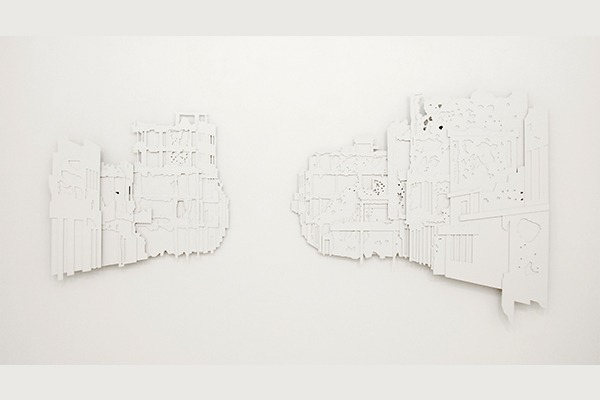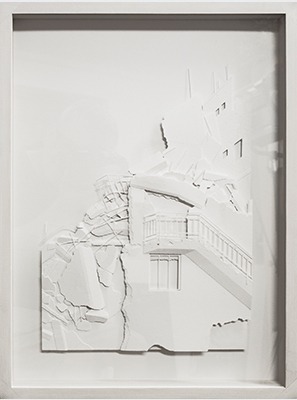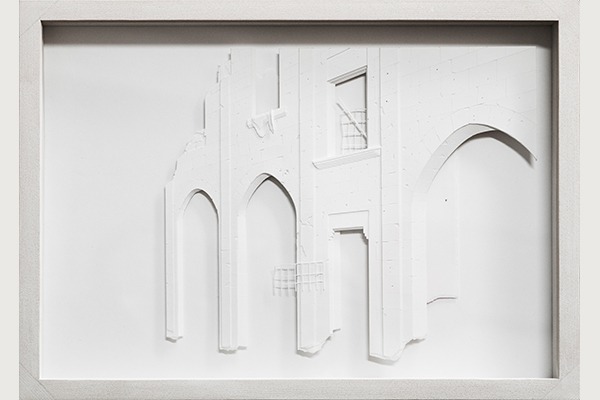
| Period| | 2020.01.16 - 2020.02.12 |
|---|---|
| Operating hours| | 10:00-18:00 |
| Space| | Leeahn Gallery Seoul |
| Address| | 9, Jahamun-ro 12-gil, Jongno-gu, Seoul, Republic of Korea |
| Closed| | Sun. |
| Price| | Free |
| Phone| | 02-730-2243 |
| Web site| | 홈페이지 바로가기 |
| Artist| |
|
정보수정요청



|
|
Exhibition Information




Writer Ha Tae-bum has been working since 2008 to ask critical questions about the way the media produces and delivers images and the attitude of the receptors to accept them. While studying the author in preparation for the 2010 exhibition, The City of the Blind, I first encountered an image of "The Fire of the Italy Buddhist Temple (2009)," one of Ha Tae-beom’s "White" series, on a computer monitor. His work was so clean and beautiful that it was hard to recall the fact that the subject of the reenactment was a press photo of the misery and suffering of others. The space in the ruins, where all the colors have been erased, maximizes the meaning of suspension and silence, and even feels peaceful. The image of the strange atmosphere created by the familiarity of the white landscape, which seems like a place that does not exist anywhere else in the world, and the concreteness of things in the picture remained an unforgettable illusion. The "white" series is a collection of photographs of the disaster scene and ruins in the media, reproduced the images of the scene in white sculptures, and then re-captured the model in the media. Remember, his work is not a reenactment of ‘the event’. It is not strictly a case, but a reenactment of the ‘image’ of the event. What he points out is a mirror image of the media that illuminates events. He interprets the media image as his own three-dimensional space, and shows it again as a result of the plane. The process of reverting a flat image into a solid, and the process of retaking it into a plane, inevitably involves the intervention of a writer's interpretation. As a result, his image cannot be the same as the substance of the case. It's just another interpretation that looks at the image of the incident from the author's point of view. In other words, his work process itself repeats the fate of all media images, the limitations of seeing targets within their respective frames. This is why the exhibition shows his work to the fore. The《 Process》 exhibition shows models and work drawings produced in the process of creating a work with the work itself, which acts as a metaphor that shows the production and acceptance of the media. A replica of a disaster site shows the truth that an image cannot capture by being displayed with a picture as a result. "The models are precisely produced on the side where they are filmed, while the sides are omitted and poorly produced, like a theatrical stage set. We want to create an opportunity to think behind the events and how the media is produced and consumed by exposing that part," said Ha Tae-bum, a model he produced in the process if his work is an image reported in the media. The working model clearly reveals how fanciful an image is by showing the true image. The《 Processes》 exhibition shows a series of works that lead to ‘illusion’, ‘surface’ and ‘facade’ in the same context as critical questions about media acceptance, although they differ in their way of expression. Although the production method of the "White" series is the same, the author’s perspective is more evident in the change of title. Unlike the "White" series, which had individual event names for each piece, such as <Tsunami (2008))German Dusseldorf (2010))Pakistani (2010))The "illusion" series does not give individual event names. By focusing on the attributes of the media rather than the events themselves, the author's intentions are more clearly communicated. The film "Willusion" once again evokes the fact that the image of what we see through the media is a mirror vision of media, not reality. Surface has the same fact that it reproduces images collected from the media, but the way it is reproduced is more flat. The work creates a drawing just like the structure in the picture, and places a piece of white paper on top of the structure in subjoined form. The result is a minor, not a photo, but a greater emphasis is placed on flatness as the spatial sensation in the picture is removed. The author explains that the new expression intent was to "speak the consumption of the media, which only looks at the surface of events (the shell-viewing) using the sublimation of buoyancy showing only one side of the target," with the title of "surface." The media that dominates the everyday life of modern people, the media's image is not a solid, but a plane. (Think of newspapers, TV screens, computer monitors, and liquid crystal screens.) Planar images are bound to be seen from one side and have limitations that require cutting out the outside of the frame. The problem is that we often forget the limits and mistake the image for knowing the world across. The "surface" task has the effect of visualizing the one-sidedness of media images, while further highlighting the flatness of images. In addition, ‘facade’ that follows in the same context as ‘surface’ boldly omit details and stack layers of flat images to further emphasize the flatness and frontality.
